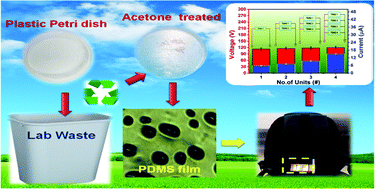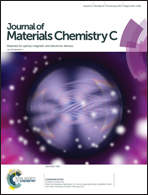A sustainable freestanding biomechanical energy harvesting smart backpack as a portable-wearable power source†
Abstract
Wearable gadgets have attracted consumer attention, resulting in an abundance of research on the development of self-powered devices. Recently, triboelectric nanogenerators (TENGs) have been shown to be an effective approach for scavenging biomechanical energy. An innovative, cost-effective and eco-friendly freestanding smart backpack-triboelectric nanogenerator (SBP-TENG) is presented for scavenging biomechanical energy. A new approach to creating irregular surfaces on a polydimethylsiloxane (PDMS) film is demonstrated by recycling a plastic Petri dish discarded after laboratory usage. The SBP-TENG relies on contact and separation electrification between the PDMS film and contact materials (wool, paper, cotton, denim and polyethylene). The performance of single- and multi-unit SBP-TENGs is systematically studied and real-time energy harvesting from human motions, such as walking, running and bending, is demonstrated. This study confirms that the SBP-TENG is an excellent technology for scavenging biomechanical energy, capable of driving a variety of low-power electronic devices such as global positioning system (GPS) sensors, wearable sensors and flashlights.



 Please wait while we load your content...
Please wait while we load your content...